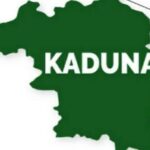
The Federal Government has adopted the application of oil spill trajectory modelling to respond to oil spill incidents as a way to reduce and prevent the impact in the marine environment.
The Minister of Environment, Amina Mohammed, speaking at the National Oil Spill Detection and Response Agency (NOSDRA) workshop on oil spill trajectory modelling yesterday in Abuja emphasized the need to prevent and respond to oil spill in the country, considering its devastating impacts on the environment, health and livelihoods of the both rural and urban communities.
Mohammed, represented by the Director- General of NOSDRA, Peter Idabor explained that the use of oil spill modelling techniques in predicting the direction of movement of spilled oil in the marine environment is a laudable innovation.
“Although it is difficult to accurately predict or stimulate actual events, this tool presents a very valuable opportunity for both oil spill preparedness and response activities,” she said.
The minister, who noted that the growing level of oil spill incidents by activities of bunkering, theft and militancy occurred mostly in facilities located on land and swamp areas, said, with the increased interest of operators to pursue exploration and production in deep offshore, calls for development of capacity to deal with the challenges that might arise from oil spill.
The NOSDRA boss, represented by Idris Musa in his remark said the agency was working in partnership with the Global Initiative for West and Central Africa (GI WACAF) and other international agencies to strengthen the oil spill response capacity in the country.
Speaking on the trajectory model, he said, “With this kind of stimulation, if there is an oil spill, you will be able to know if there is a creek and if the oil will go into a creek to enter a community, so what we do is to block the creek in advance, so it enables you to have advance knowledge of what to do and to prevent oil spill.”

 Join Daily Trust WhatsApp Community For Quick Access To News and Happenings Around You.
Join Daily Trust WhatsApp Community For Quick Access To News and Happenings Around You.


